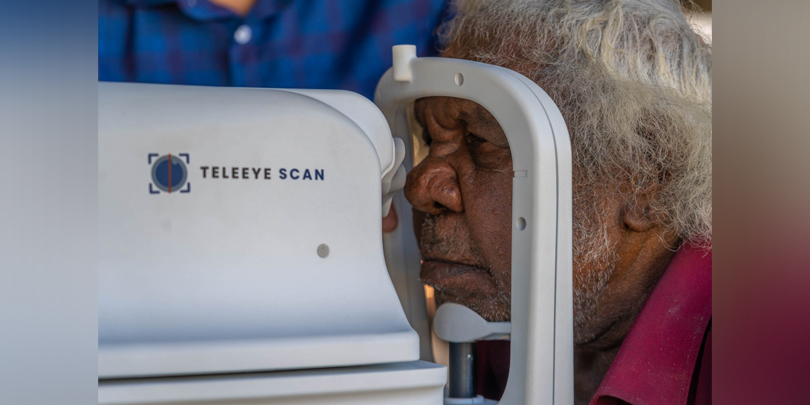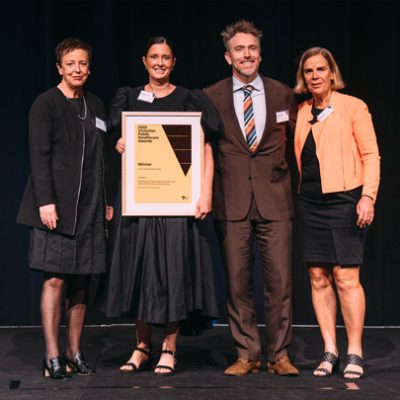
Researchers have demonstrated how cutting-edge medical technology, including devices powered by artificial intelligence, can help to dramatically improve health outcomes in remote Indigenous communities. Source: UNDA.
The TeleEye Scan – an inexpensive TGA-approved portable eye screening system developed by the University of Notre Dame Australia – was recently evaluated over an extended period at two remote communities in Western Australia’s Kimberley region.
The results were startling, with multiple serious health conditions detected that had not been previously diagnosed.
Notre Dame’s chair of digital health and telemedicine, Yogi Yogesan, helped develop the eye screening system that uses AI to instantly detect a range of conditions, including glaucoma, macular degeneration and diabetic retinopathy with 95 per cent accuracy.
“The patient just has to put their head on the camera’s chin rest, and it will automatically take photos of both eyes, and then it [the AI] will give feedback in seconds as to whether they will have to be referred to an ophthalmologist,” Professor Yogesan said.
Professor Yogesan and his team screened about 60 residents from the Muludja and Bawoorrooga communities near Fitzroy Crossing. They found about half of the participants had an undiagnosed eye condition. Alarmingly, 10 of the 60 had a serious condition that required urgent treatment to stop them from going blind.
“What is truly transformative about this technology is that it enables us to bring quality healthcare to the community, rather than expecting community members to travel thousands of kilometres to access services at a major regional hospital,” Professor Yogesan said.
“In fact, some community members we saw had never had their eyes screened due to that tyranny of distance.”
The trial was coordinated by the Foundation for Indigenous Sustainable Health (FISH) and TeleMedC Australia.
FISH CEO Mark Anderson said he believed it was successful because it was co-designed with the community, ensuring a trusted and culturally appropriate model of care was developed that everyone could embrace.
This included training community members on how to use the technology themselves for those times when the researchers were not on site.
FULL STORY
Innovative AI technology helps close the gap in Indigenous healthcare (UNDA)






